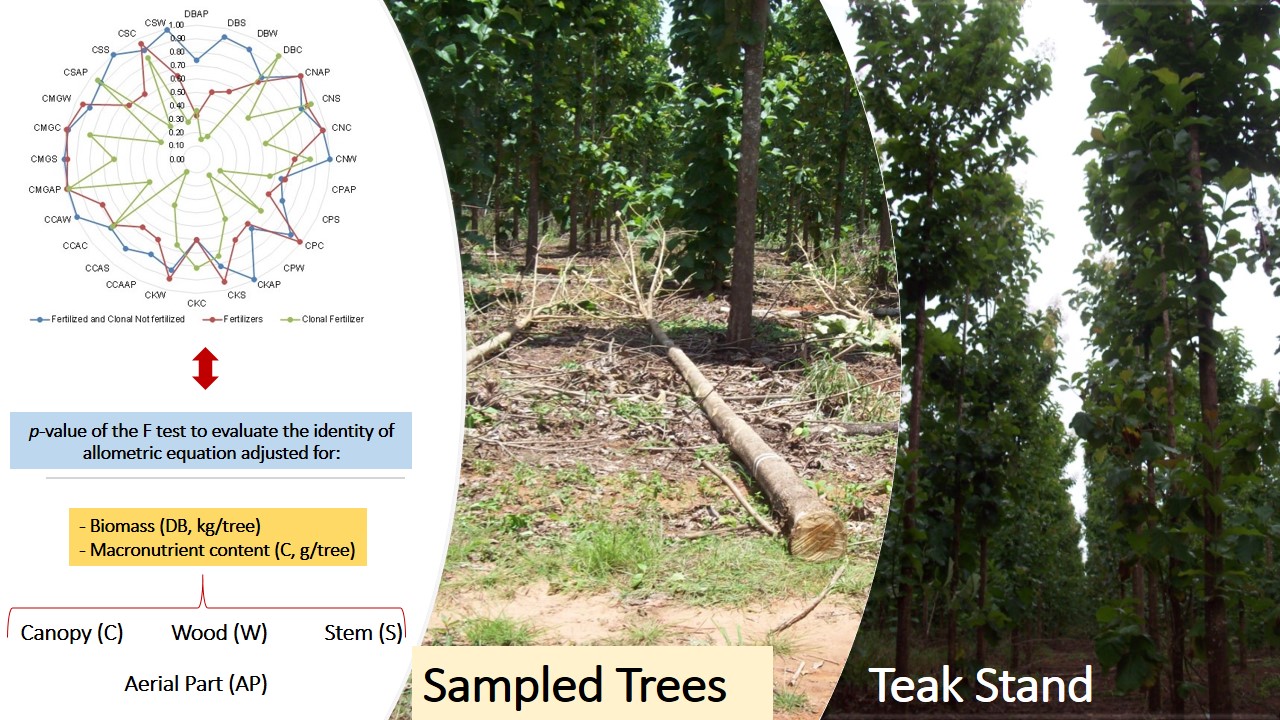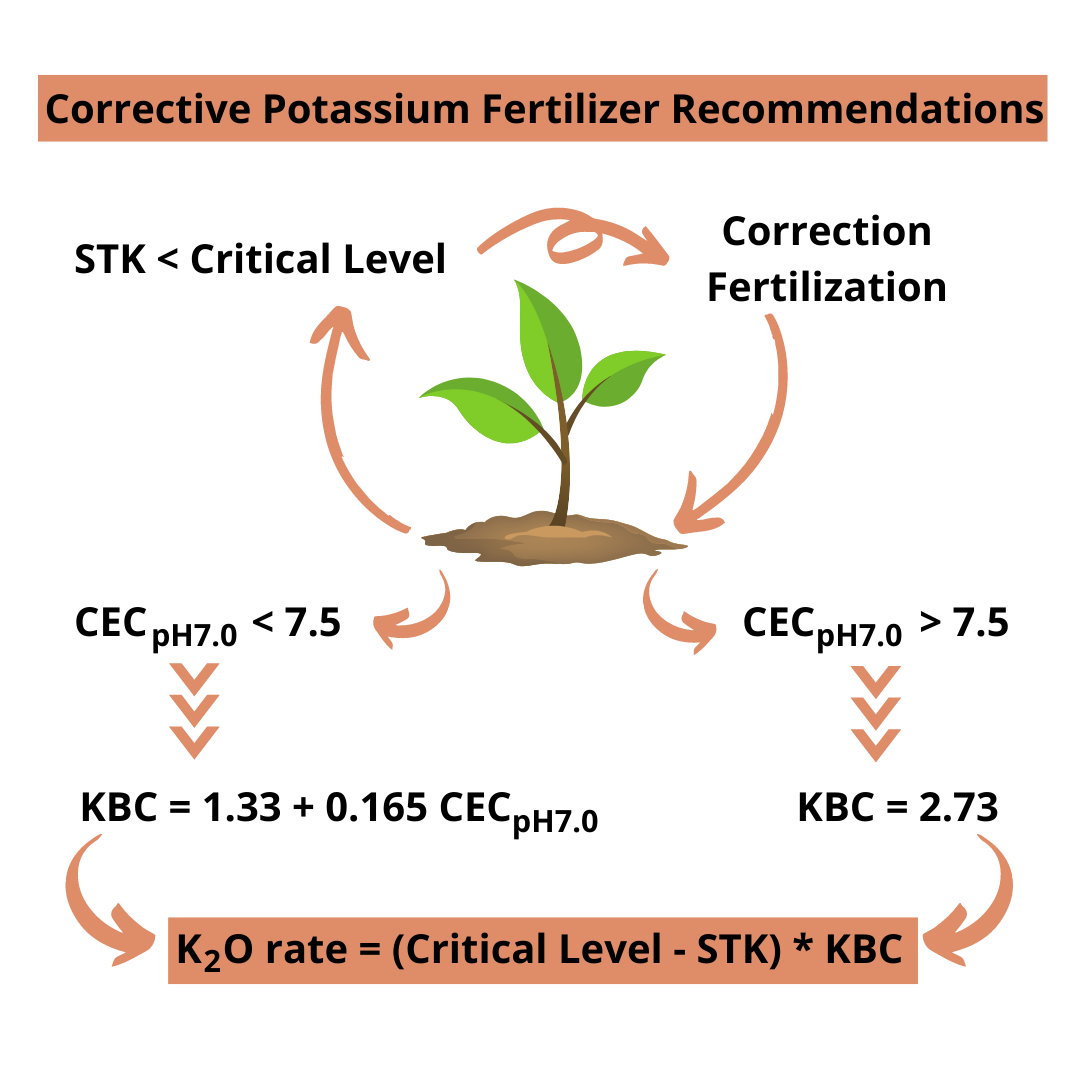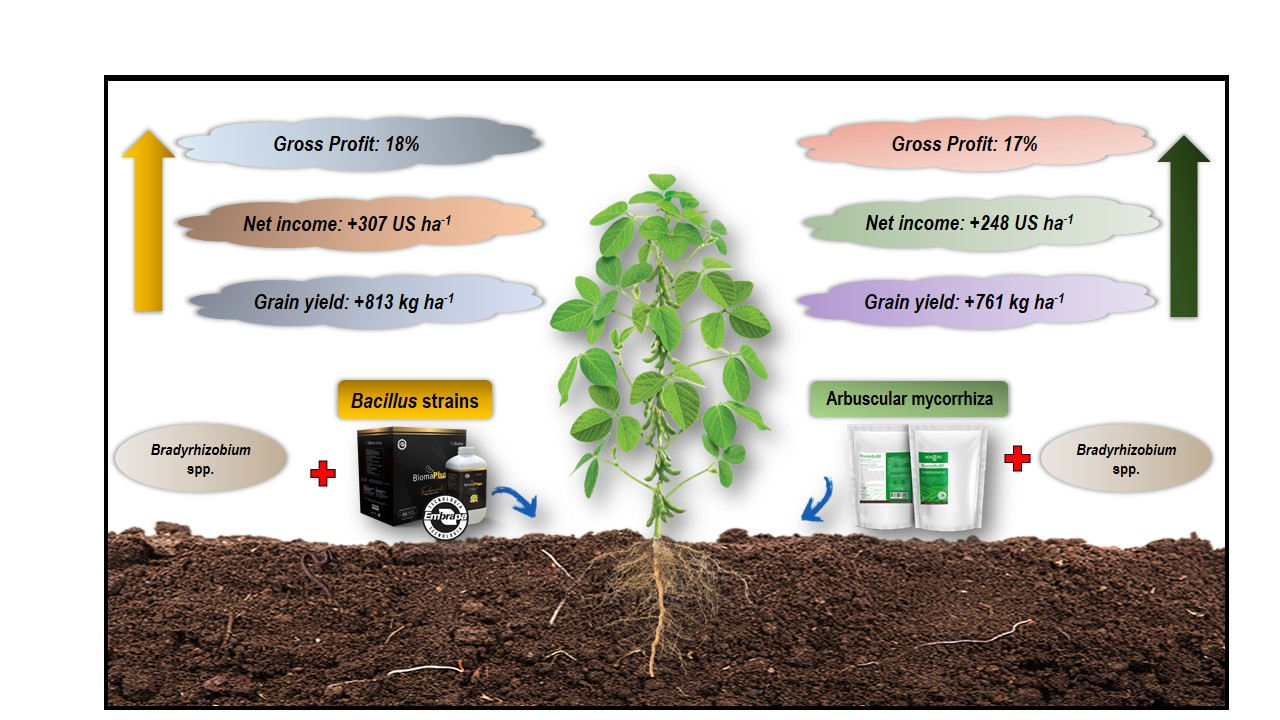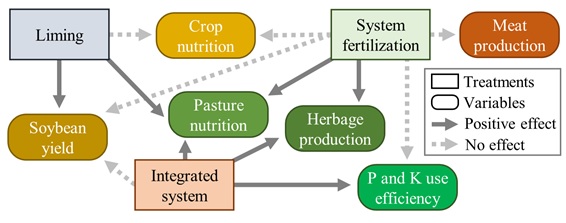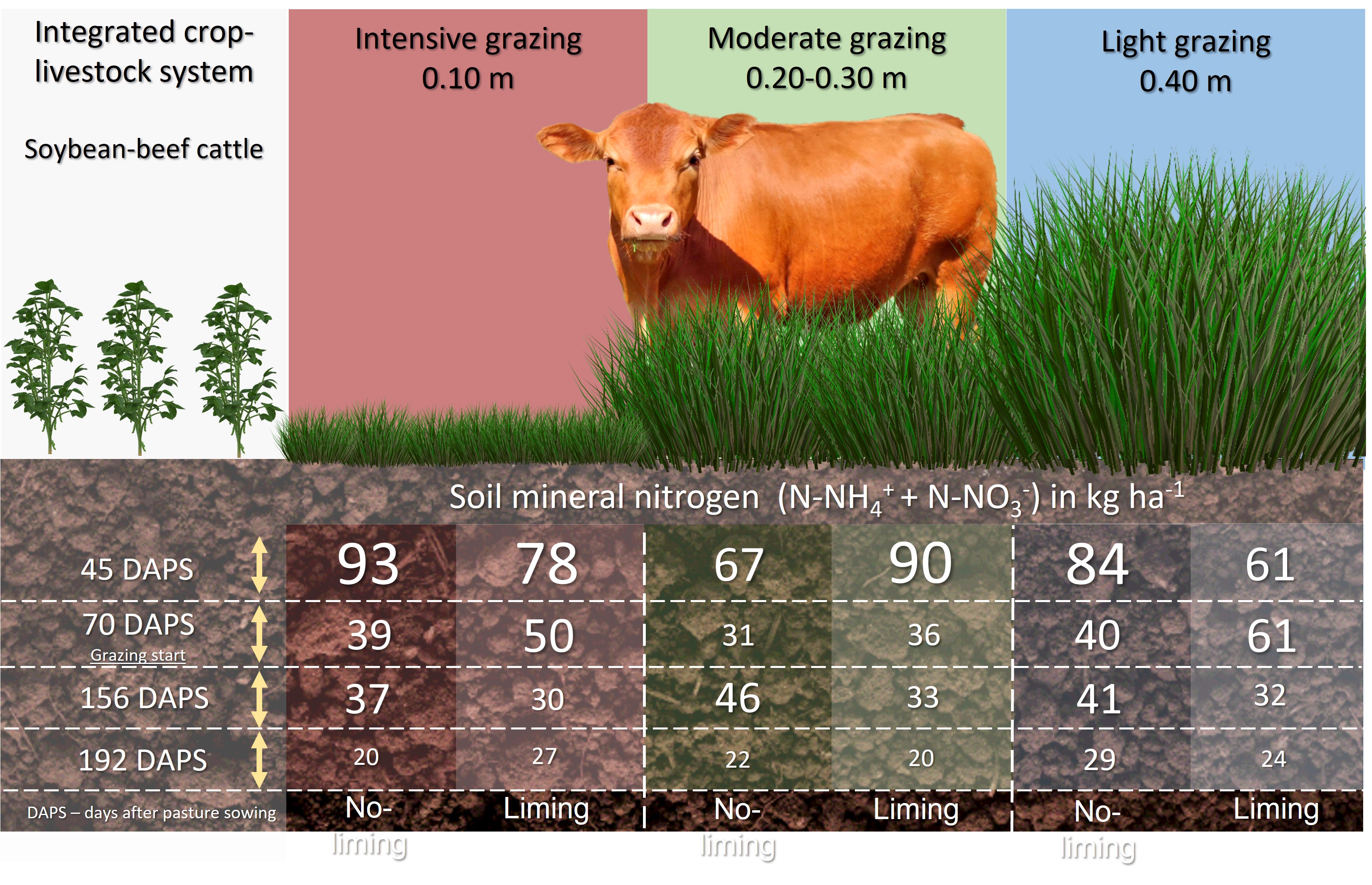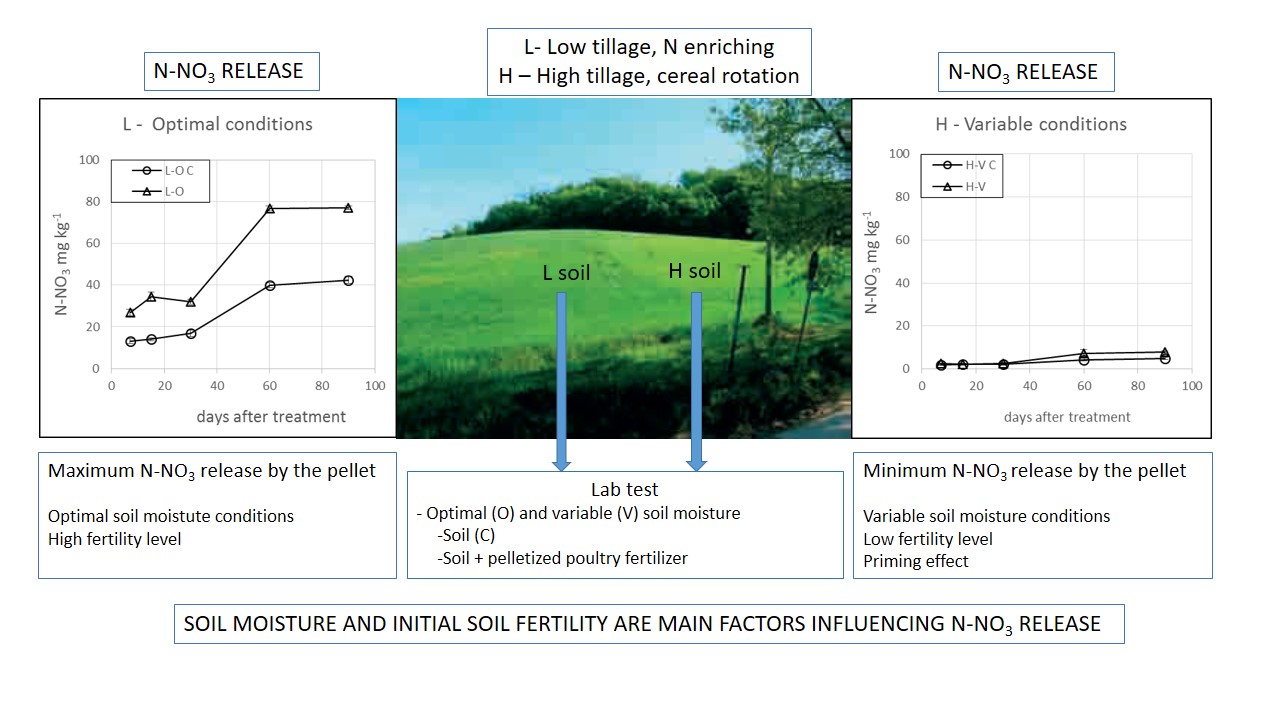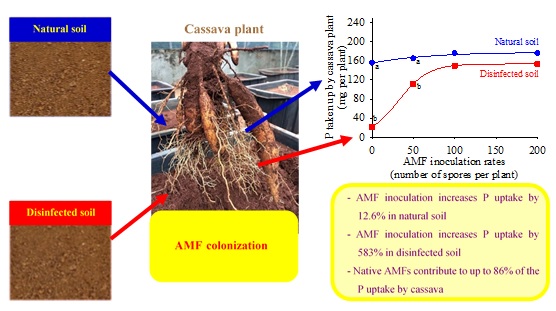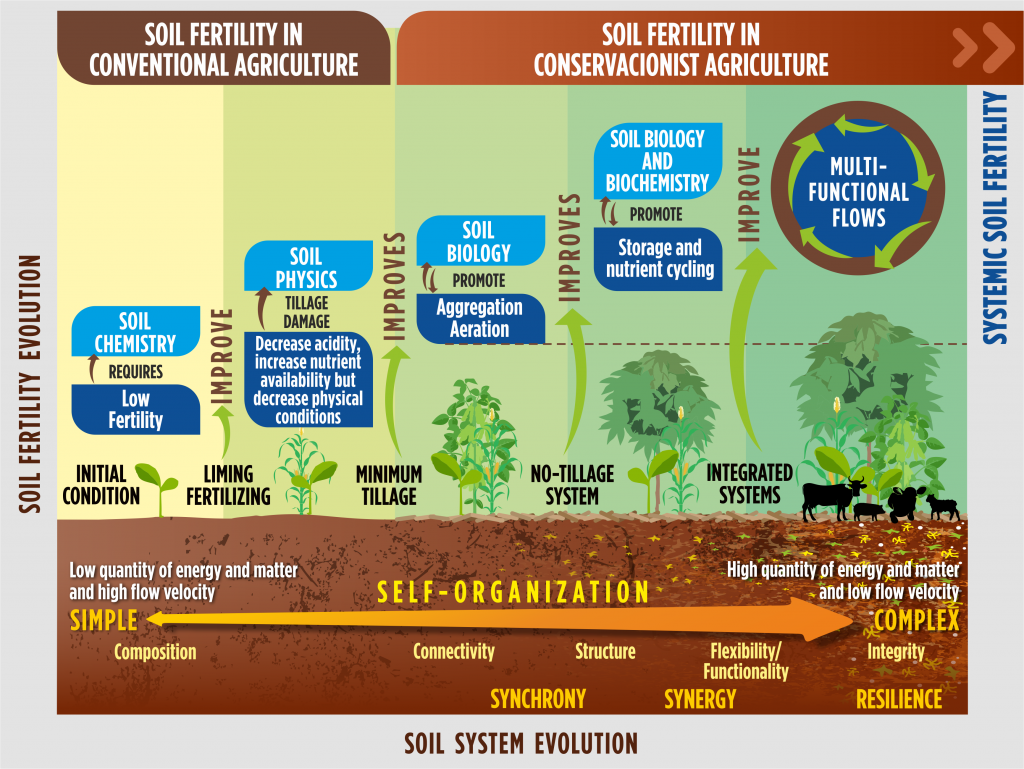Allometric equations for biomass and contents of macronutrients in a young Tectona grandis stand
23/set/2022
ABSTRACT Evaluations of biomass and nutrient contents in teak stands are necessary alternatives for avoiding early cutting to provide supplemental data for the plant module of fertilization recommendation systems. This study aimed to adjust allometric equations to estimate the accumulation of biomass and nutrient contents in teak plantations in the central region of Brazil. Plots in seminal and clonal stands contained 81 trees aged 75 months, that had not received previous fertilization or thinning. Additional clonal stands aged 15, 51 […]
Potassium buffering capacity and corrective potassium fertilizer recommendations in soils from Southern Brazil
17/ago/2022
ABSTRACT Soils with low potassium (K) availability require corrective fertilization for grain crops. The recommended rate to increase K availability up to the critical level depends on the soil K buffering capacity (KBC). This study aimed to quantify the KBC and recalculate the rates necessary to reach the K critical level in 23 soils from Southern Brazil. Soil samples were incubated with six K rates, that were thus grouped according to CECpH7.0: below 7.5 cmolc dm-3 (0, 30, 60, 90, […]
Phosphate sources affect P and N nutrition in pluri-specific natural grasslands in the Brazilian Pampa biome
18/jul/2022
ABSTRACT High acidity and low soil P availability in the soils from the Pampa natural grasslands generally limit the forage growth and economic return. Thus, to increase the economic return and avoid environmental degradation and biodiversity loss due to replacement by intensive cropping systems, it is essential to improve the soil P availability. This study aimed to diagnose the nutritional status of the pluri-specific natural grasslands amended with different history of P sources. Additionally, we also try to indicate the […]
Increase in yield, leaf nutrient, and profitability of soybean co-inoculated with Bacillus strains and Arbuscular mycorrhizal fungi
22/jun/2022
ABSTRACT Microorganisms in the soil and rhizosphere can release part of the total phosphorus in the soil through solubilization, mineralization, and an increase of the root absorption surface. The ability of phosphate solubilizing bacteria and mycorrhizal fungi to promote higher yield and profitability in co-inoculated soybean was investigated. For this purpose, field and greenhouse experiments were conducted in the years 2020 and 2021 in Brazil. In the field, the first factor was composed of microorganism application on soybean (simple inoculation […]
Fertilization strategies and liming in no-till integrated crop–livestock systems: effects on phosphorus and potassium use efficiency
31/maio/2022
ABSTRACT In an integrated crop-livestock system (ICLS), system fertilization exploits the nutrient cycling imposed by animal grazing and increases the system efficiency. An increasingly popular approach to fertilization in southern Brazil is anticipating P and K requirements for soybeans into the pasture phase. This can increase the use efficiency of these nutrients in ICLS based on meat production in winter and soybean in summer. This study aimed to evaluate the effect of fertilization strategy, grazing and soil acidity correction on […]
Liming and grazing intensities effects on soil mineral nitrogen throughout the pasture cycle in a subtropical integrated crop-livestock system
06/abr/2022
ABSTRACT Grazing intensity is a preponderant factor for the success of integrated crop-livestock systems (ICLS). Management of grazing intensity impacts soil organic matter (SOM) dynamics, soil reacidification process, and amount and quality of residues added to the ICLS. Consequently, the soil mineral nitrogen (N) forms may present different behavior throughout the pasture cycle, because they are directed linked to SOM and soil acidity dynamics. This study aimed to evaluate the impact of grazing intensities and liming in the temporal variation […]
Nitrogen release from pelletized poultry fertilizer in two soils: influence of soil moisture and microbial biomass
28/jan/2022
ABSTRACT Nitrogen release from organic amendments, e.g., from organic agriculture, is a key process to raise soil fertility to sustain crop production in low environmental impact agroecosystems. This study aimed to investigate nitrogen release from a pelletized organic amendment containing poultry litter, guano and pot ale applied to soil from a field under two different management systems: an alfalfa-based crop rotation, enriched with N by the legume, under low-intensity tillage and a cereal-sunflower crop rotation under high-intensity tillage. Both sample […]
Nitrogen use efficiency and grain yield of corn hybrids as affected by nitrogen rates and sowing dates in subtropical environment
13/jan/2022
ABSTRACT Delay of sowing date in subtropical environments with long growing seasons can modify the yield response of corn hybrids to nitrogen (N) fertilization. This study evaluated the effects of the sowing time, and N top-dress rate on corn hybrids’ yield and N-use efficiency with different cycles. Two field experiments were carried out in subtropical environment of southern Brazil. The following factors were investigated: corn hybrids (AG9025, super early cycle and P30F53, early cycle), sowing times (early and late spring), […]
Growth and phosphorus uptake by cassava in P-deficient soil in response to mycorrhizal inoculation
30/nov/2021
ABSTRACT Phosphorus (P) is one of the most difficult nutrients for plants to acquire because of its low content in the soil solution. Cassava (Manihot esculenta Crantz) has a thick and sparse absorbent root system; therefore, it is dependent on its association with arbuscular mycorrhizal fungi (AMF) for P acquisition from the soil. Thus, inoculation of cassava with AMF can improve the development of this root crop. This study evaluated the effects of soil disinfection (disinfected vs. natural) and the […]
Systemic Soil Fertility as product of system self-organization resulting from management
24/nov/2021
ABSTRACT: Soil Fertility is one of the most relevant fields of Soil Science related to agricultural production, especially in tropical and subtropical environments, due to the prevalence of weathered and naturally unproductive soils. However, indicators of Soil Fertility currently used do not represent what actual happens in the soil; once must be understood as a process. The wisdom of this importance occurred in Antiquity and evolved until the mid-19th century, when the mineralist concept was proposed, which is still dominant […]

